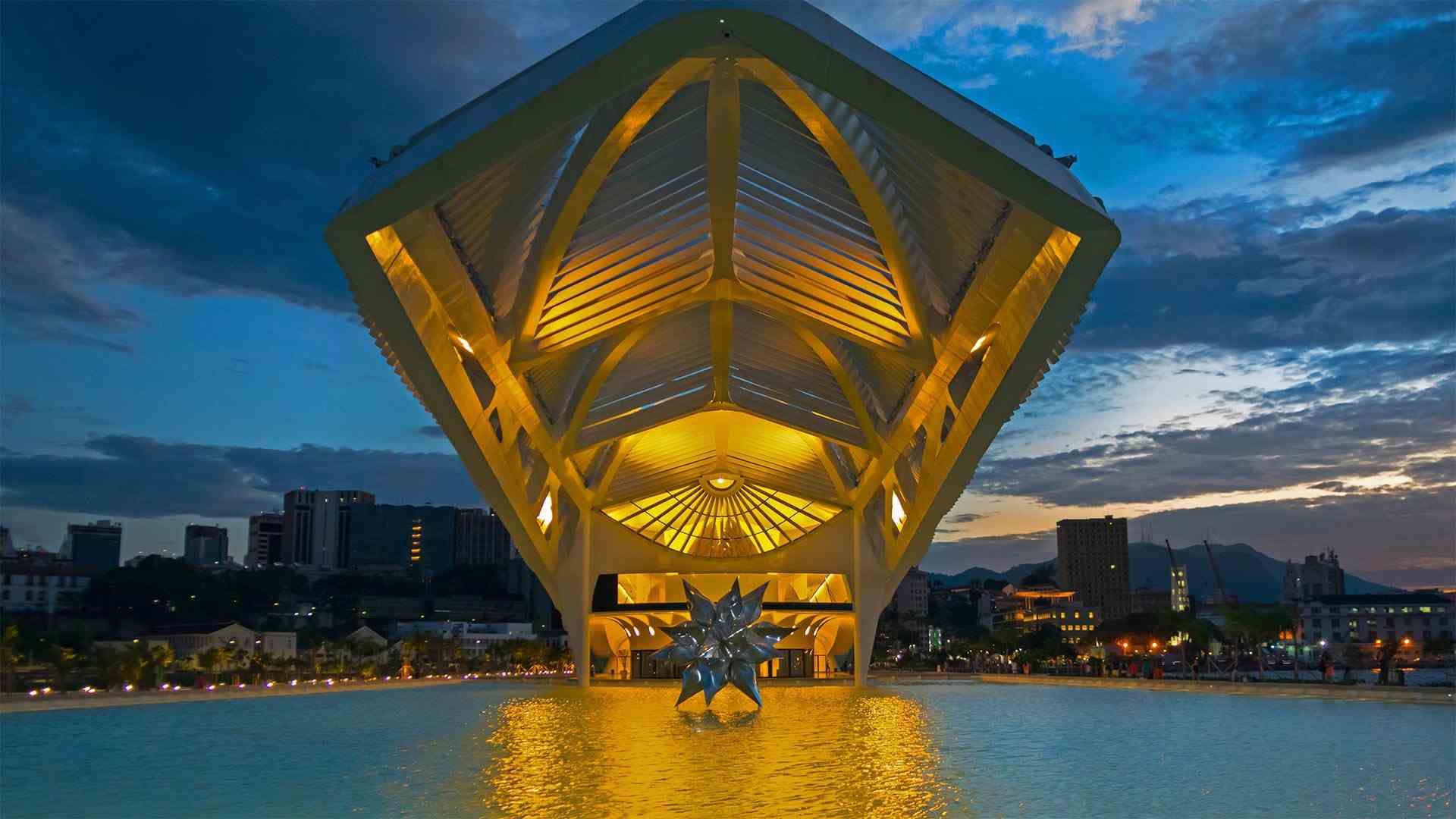明天博物馆, 巴西里约热内卢 Museu do Amanhã (Museum of Tomorrow) in Rio de Janeiro, Brazil (© Nido Huebl/Shutterstock)

明天博物馆, 巴西里约热内卢 Museu do Amanhã (Museum of Tomorrow) in Rio de Janeiro, Brazil (© Nido Huebl/Shutterstock)
Back to the future 回到未来
200th anniversary of Brazilian independence
Today we visit the Museu do Amanhã (Museum of Tomorrow) in Rio de Janeiro to celebrate 200 years of Brazilian independence. Designed by Spanish neofuturist architect Santiago Calatrava, the unique structure was commissioned to showcase Rio's revitalized waterfront ahead of the 2016 Olympics. The museum comprises five main areas: Cosmos, Earth, Anthropocene, Tomorrow, and Us, each inviting visitors to interact in different ways and learn about living in a sustainable world.
Brazil gained independence from Portugal just a few decades after the United States broke off from Great Britain, though it happened in a decidedly different way. Don Pedro I, first emperor of Brazil, was a member of the Portuguese ruling family (he would eventually briefly rule Portugal too). When Portugal threatened to take back the political autonomy Brazil had enjoyed since 1808, Pedro sided with his adopted homeland against the Portuguese. After a three-year war that was largely bloodless, the Empire of Brazil, which preceded the vibrantly diverse democracy we know today, was born on September 7, 1822.
巴西独立200周年
今天,我们参观了里约热内卢的明天博物馆(Museu do Amanhã),以庆祝巴西独立200周年。由西班牙新未来主义建筑师圣地亚哥·卡拉特拉瓦(Santiago Calatrava)设计,这座独特的建筑被委托在2016年奥运会之前展示里约复兴的滨水区。博物馆由五个主要区域组成:宇宙、地球、人类世、明天和我们,每个区域都邀请游客以不同的方式互动,了解如何生活在一个可持续发展的世界中。
在美国脱离英国之后的几十年里,巴西从葡萄牙获得了独立,尽管这是以一种截然不同的方式发生的。巴西第一位皇帝唐·佩德罗一世是葡萄牙统治家族的成员(他最终也将短暂统治葡萄牙)。当葡萄牙威胁要夺回巴西自1808年以来享有的政治自治权时,佩德罗站在自己的祖国一边反对葡萄牙人。在经历了一场三年的基本上不流血的战争后,巴西帝国于1822年9月7日诞生,它先于我们今天所知的充满活力的多元化民主。
评论已关闭